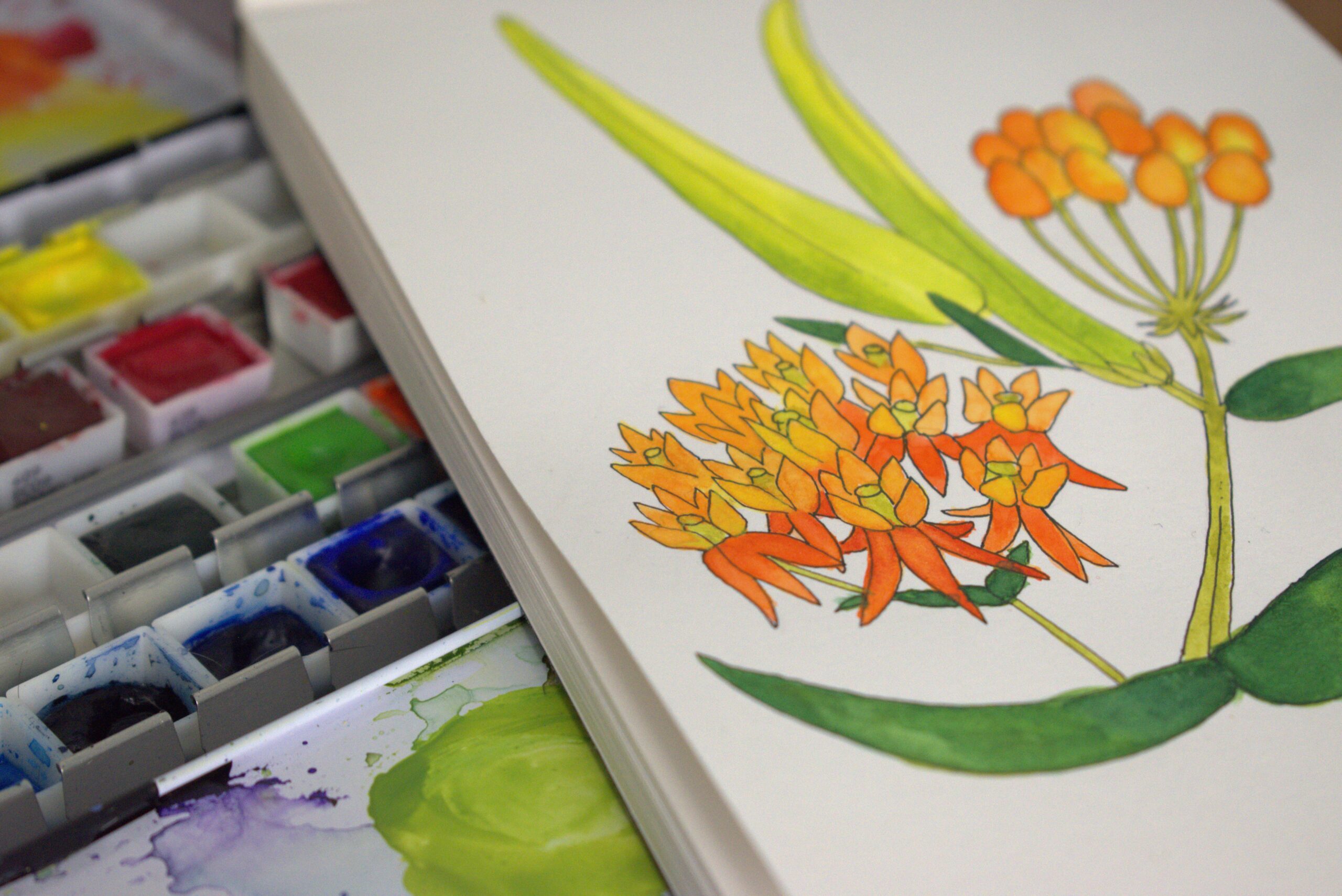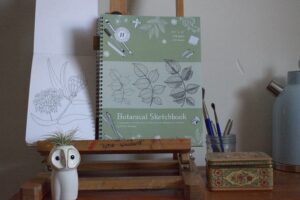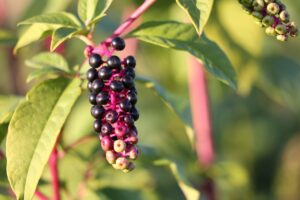Links contained in this post and elsewhere on my website may include affiliate links. When you make a purchase through these links, I earn a commission at no additional cost to you. I only link to products and services that I love - and that I think you will love, too!
I’ve wanted to create a nature journal of native medicinals for some time. Native woodland plants of the Appalachian mountains are one of my favorite subsets of herbalism. I learned to identify many of these plants on hikes with my grandmother, so creating a nature journal about them has been a lovely way to celebrate my connection and history with these herbs. Here’s what I did and how you can create your own.
Choosing the herbs for your nature journal
Because a nature journal focuses on field observations, it helps to focus on plants growing nearby. Starting with only a few plants helps you narrow your focus and prevents overwhelm. If you’re completely new to identifying plants, go on a plant walk hosted by an herbalist or ranger-led interpretive program to learn more about what plants grow in your locale.
I decided to start with seven herbs for this project. The goal is to add to it as time goes on, but this seems like an achievable start. These are all plants that I wrote monographs for as part of completing the Advanced Herbal Course with the Herbal Academy (#affiliate). I’d love to eventually complete a materia medica using my monographs and my own illustrations. For now, I’m working on these journal illustrations as practice.
- Tulip tree (Liriodendron tulipifera)
- Bee balm (Monarda didyma)
- Goldenrod (Solidago canadensis)
- Witch hazel (Hamamelis virginiana)
- Passionflower (Passiflora incarnata)
- Butterfly weed (Asclepias tuberosa)
- White oak (Quercus alba)
Gathering tools and materials for a nature journal
Perhaps the easiest nature journal to create is a book of field notes. You might want to add sketches to it from time to time, or include photographs, or focus strictly on written notes. However, I think there’s something to be said for teaching yourself to create a beautiful nature journal you’ve illustrated yourself!
Generally, some good tools to consider are:
- the type of notebook or sketchbook you like
- sketching pencils for initial layouts or pencil drawings
- a kneaded eraser that goes easy on your paper and gives you lots of control
- outlining/ drawing tools like felt tip pens
- coloring mediums like artist’s markers, colored pencils, oil pastels, or watercolors
I’m already an artist, so I had a pretty good idea of what tools and supplies I wanted. I really love Traveler’s style notebooks and decided to use that as inspiration. This style of journaling uses a leather cover to hold several small notebook inserts.
I really enjoy Stillman & Birn sketchbooks. The Epsilon and Zeta series have smooth white paper and are my favorites. I decided on an Epsilon series sketchbook, which has lighter-weight paper. They are really good for the ink drawings I envisioned for this project. They also take a light watercolor wash very nicely.
For drawing, I usually use Pigma Sakura Micron pens over a light sketch with a mechanical drafting pencil. These pens have a felt tip and are waterproof. So I can add watercolor washes over top of my drawings without smudging.
Planning and layout
There are as many different ways to plan your nature journal as tools and mediums! Consider what you want it to look like and the style of art you want to make. Do you want a field sketchbook that you take with you on plant walks? Would you prefer to take a pocket notebook with you to jot down information and then add it to a journal once you’re home?
Also, decide about organizing your nature journal at this stage. Would you like to have separate sections for each season? Would you prefer to organize alphabetically by plant name? Or do you want a nature journal that focuses on a specific location?
I want this project to blend elements of a materia medica and nature journal. So the layout includes a page for the illustration, a page for a mini monograph, and a page for notes about where I encounter each plant while hiking or gardening. I’ll take a small notebook with me when I’m out and about, and transfer my observations into my journal later.
Building artistic skills for a nature journal
Some of the basic art skills you’ll want to learn about and apply to your nature journal include:
- preliminary sketching techniques
- leaf/flower/structure shapes that are common within a plant family
- how to combine observation with artistic interpretation to create your own style
Once you’ve learned the techniques to get started, it all comes down to practice! Relax and let yourself enjoy the process without judgement. Your nature journal is a way for *you* to connect with herbs. You don’t have to share it with anyone unless you want to, so you shouldn’t feel self-concious about trying new things or making mistakes.
Like herbalism, art is something I’ve practiced since I was a child. My grandmother was also my main artistic influence. I always brought my sketchbook along when I visited her, and she almost always had a new painting or technique to share with me from a class she’d taken.
I’ve enjoyed doing simple pencil sketches of plants, and also completed an online botanical sketchbooking class that focus on using houseplants as a subject. I loved the way my illustrations turned out!
But I really wanted to explore even more techniques for this project, so I decided to take Herbal Academy’s Botanical Drawing for Herbalist’s course (#ad). It covers many techniques for preliminary sketching and teaches how to go step by step from initial sketch to finished artwork. You can read my full review of it here!
Connecting with herbalism through your nature journal
What types of observation should you include about each plant? I like to make seasonal notes and location notes. Some options include:
- Where were you and what were you doing when you noticed the plant
- List the other plants growing nearby (this creates a picture of the plant community as a whole)
- Describe the location broadly (State, county, date) as well as locally (what distinctive natural features are nearby)
- Notice any pollinators or other insects on or near the plant
- Are birds or wildlife feeding from or interacting with your plant?
- Note down dates of emergence, first bloom, leaf changes, when seeds appear, and other life-cycle data
As you add observations for each of your plants, you’ll find that your ability to notice small details increases. Familiarity with a plant helps you notice changes over time and gives you insight into herbs as part of an ecosystem.
It’s a really beautiful process of learning the intimate details of a plant and beginning to see the connections between plant communities and environment and how they coexist in their own context, outside of how we as herbalists typically use them.
A flip-through of my herbal nature journal
If you’re curious to see how my nature journal is turning out, hop over to my YouTube channel! I’ve started filming vlog updates as I work.
Other types of journals for learning herbalism
I often use journaling as a learning tool, and there are many different ways to approach this creative memory-keeping habit as an herbalist. Read this article to explore 3 Types of Journals to Teach Yourself Herbalism.


